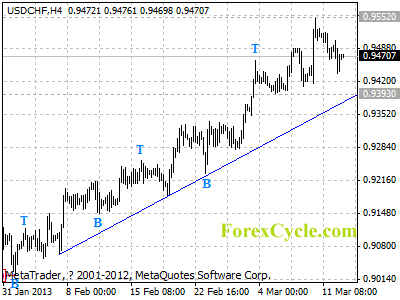London Gold Market Report
from Ben Traynor
BullionVault
Wednesday 13 March 2013, 08:15 EST
U.S.DOLLAR gold prices ticked higher to $1597 per ounce Wednesday morning, holding gains from a day earlier, as the Dollar fell against the Euro despite warnings from a prominent Eurozone policymaker that the crisis in the region is not over.
Gold in Euros rose to its highest level this month at €1229 an ounce, in contrast with gold in Sterling, which failed to move back above £1070 an ounce as the Pound recovered some ground against the Dollar after hitting a fresh two-and-a-half-year low yesterday.
Silver dipped briefly below $29 an ounce this morning before rallying 20¢, while stock markets ticked lower, commodities were broadly flat and US Treasury bonds gained.
A day earlier, gold climbed above $1590 an ounce for the first time in March Tuesday after Bundesbank chief Jens Weidmann said he does not believe the Eurozone crisis is over.
A number of analysts have suggested the speed of yesterday’s move reflected so-called short covering of gold positions, whereby traders who have bet on the price of gold falling cover themselves as it rises by taking bets in the opposite direction i.e. buying gold.
“The price rise yesterday will not sustain as there was no major change in fundamentals,” reckons Jinrui Futures analyst Chen Min in China.
“We’ll see strong influence from technicals on prices as there isn’t much data on the plate this week.”
Speaking publicly again Wednesday, Weidmann told an audience in Cologne that European governments are “not giving clear direction” and reiterated yesterday’s comments that an end to crisis “is not in sight”.
Weidmann also said it does not make sense “to speculate about individual countries leaving the Euro area”, having been asked about a comment from a German politician last week who suggested Italy may exit the single currency.
“In fact, Italy’s already out of the Euro,” Italian comedian-turned-politician Beppe Grillo, whose Five Star movement won the biggest share of the vote in last month’s Italian election, says in an interview published by German newspaper Handelsbaltt Wednesday.
Northern European countries, he adds, will keep Italy in the Euro “until they are able to get back the funds their banks invested in Italian government bonds. Then they will drop us like a hot potato.”
China can only invest around 1% to 2% of its foreign currency in gold as the market is too small to invest any more, the deputy governor of the central bank and head of the State Administration of Foreign Exchange (SAFE), Yi Gang, told reporters Wednesday. Yi added however that gold is always an option for China.
In January, SAFE created a new unit, the SAFE Co-Financing office, tasked with exploring new investments through which to diversify China’s $3.3 trillion of foreign exchange reserves.
Two percent of this would equate to just under 1300 tonnes of gold at today’s price, more than the 1054.1 tonnes the World Gold Council reports in its latest World Official Gold Holdings. China however does not regularly report when it adds to its official reserve, and has not reported how much gold it holds since 2009.
China’s Renminbi currency, along with Australian assets and gold, “emerge as the most important assets for diversification” for central bank reserves, according to a report published this morning by the World Gold Council.
Using portfolio optimization analysis the authors of the report, ‘Central bank diversification strategies: rebalancing from the Dollar and the Euro’, found that “gold received a prominent 8% allocation, surpassing the 4% allocation to Renminbi and 3% to Australian assets.
“Gold’s allocation,” the report adds, “was matched only by Japanese Yen which was also weighted at 8% of the optimized portfolio.”
The latest World Official Gold Holdings shows that the top three nations by size of official gold reserves, the US, Germany and Italy, have 75.6%, 72.7% and 72.2% of their reserves as gold respectively.
Gold value calculator | Buy gold online at live prices
Editor of Gold News, the analysis and investment research site from world-leading gold ownership service BullionVault, Ben Traynor was formerly editor of the Fleet Street Letter, the UK’s longest-running investment letter. A Cambridge economics graduate, he is a professional writer and editor with a specialist interest in monetary economics. Ben can be found on Google+
(c) BullionVault 2013
Please Note: This article is to inform your thinking, not lead it. Only you can decide the best place for your money, and any decision you make will put your money at risk. Information or data included here may have already been overtaken by events – and must be verified elsewhere – should you choose to act on it.


 It’s All About the Apps
It’s All About the Apps